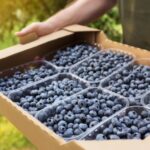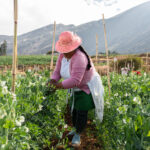Agronometrics in Charts: U.S. market brimming with avocados leading up to Cinco De Mayo

In this installment of the ‘Agronometrics In Charts’ series, Sarah Ilyas studies the state of the U.S. avocado market. Each week the series looks at a different horticultural commodity, focusing on a specific origin or topic visualizing the market factors that are driving change.
Cinco de Mayo has evolved into a festive occasion commemorating Mexican culture and its rich heritage, particularly in areas with sizable Mexican-American populations in the US. The holiday is often celebrated with Mexican handheld foods, such as tacos, burritos and quesadillas.
According to a Numerator Basket Affinity Report, which analyzed purchases from April 7 to May 4, 2022, consumers spend an extra $1.9 when avocados are included in their shopping baskets in preparation for Cinco de Mayo. “Cinco de Mayo is the second-biggest consumption occasion in the U.S. for avocados and guacamole, and it represents a key opportunity for us to engage with shoppers,” says Stephanie Bazan, senior vice president of commercial strategy and execution at Avocados From Mexico.
Due to surging demand and torrential rains in California, Mexican avocados currently dominate the US market. The U.S. market anticipates high volumes of Mexican avocados all the way through May, when Peru will begin shipping some of its produce, followed by the California crop, providing a robust supply of avocados throughout the summer.
This year's exceptionally wet winter in California has been notably beneficial for the state's farmers. The rains, in essence, relieved cultivators of the pressure to harvest produce rapidly to cover water costs. This enables them to suspend the fruit for longer, enabling it to grow in size; consequently, the season will begin later, as there is no rush to harvest avocados at this time of the year.
“Last year we were already 30 million pounds into the crop at this point, and this year we are only around five million,” says Michael Chirico, president at McDaniel & Chirico Worldwide. The California crop will likely run until August this year, with good supply all throughout the Northern Hemisphere summer.
 Source: USDA Market News via Agronometrics.
Source: USDA Market News via Agronometrics.
(Agronometrics users can view this chart with live updates here)
According to the Hass Avocado Board, the volume of Hass avocados is up nearly 20% from the same period in 2022. A year-to-date volume comparison revealed that 655.1 million pounds of avocados were available in the United States during the first 13 weeks of 2022, as compared to 75.9 million pounds within the same time this year.
"We've seen a strong and consistent supply of high-quality avocados, so we expect this year's Cinco de Mayo celebrations to be a huge success in terms of meeting avocado shoppers' demands," says Bazan.
The volume of Peruvian exports to the United States has been increasing exponentially and is expected to reach its climax in June. In 2022, the United States received 269.65 million pounds of avocados from Peru, according to USDA data. According to the Peruvian Association of Hass Avocado Producers, this volume is expected to increase by 13% in 2023.
Some consider this to be potentially problematic for the market. “There is going to be a lot of pressure on the market because Mexico and Peru have a very large crop, and they will intersect with the California crop which will start later this year due to the heavy rains,” says Chirico.
 Source: USDA Market News via Agronometrics.
Source: USDA Market News via Agronometrics.
(Agronometrics users can view this chart with live updates here)
 Source: USDA Market News via Agronometrics.
Source: USDA Market News via Agronometrics.
(Agronometrics users can view this chart with live updates here)
At the moment, the inflation in the US hasn't affected avocado sales, according to Agustin Sanchez, the general manager of Frutas Finas La Fabrica. “After the exaggerated demand during the Super Bowl, there was uncertainty about whether there would continue to be good consumption of avocado. However, sales have remained at good levels because prices are relatively low when compared to other seasons, and this continues to drive demand,” Agustin says.
The oversupply in the market could indicate good news for consumers. “Consumers are going to enjoy good retail pricing, a lot of promotable pricing with high-quality fruit,” says Chirico.
However, producers and importers who must sell their fruit will face a difficult battle due to downward pressure on pricing. Pricing was recorded at $28.99 per package in week 13, 44% lower than the prices recorded in the same period of 2022.
 Source: USDA Market News via Agronometrics.
Source: USDA Market News via Agronometrics.
(Agronometrics users can view this chart with live updates here)
In our ‘In Charts’ series, we work to tell some of the stories that are moving the industry. Feel free to take a look at the other articles by clicking here.
All pricing for domestic US produce represents the spot market at Shipping Point (i.e. packing house/climate controlled warehouse, etc.). For imported fruit, the pricing data represents the spot market at Port of Entry.
You can keep track of the markets daily through Agronometrics, a data visualization tool built to help the industry make sense of the huge amounts of data that professionals need to access to make informed decisions. If you found the information and the charts from this article useful, feel free to visit us at www.agronometrics.com where you can easily access these same graphs, or explore the other 21 commodities we currently track.














































